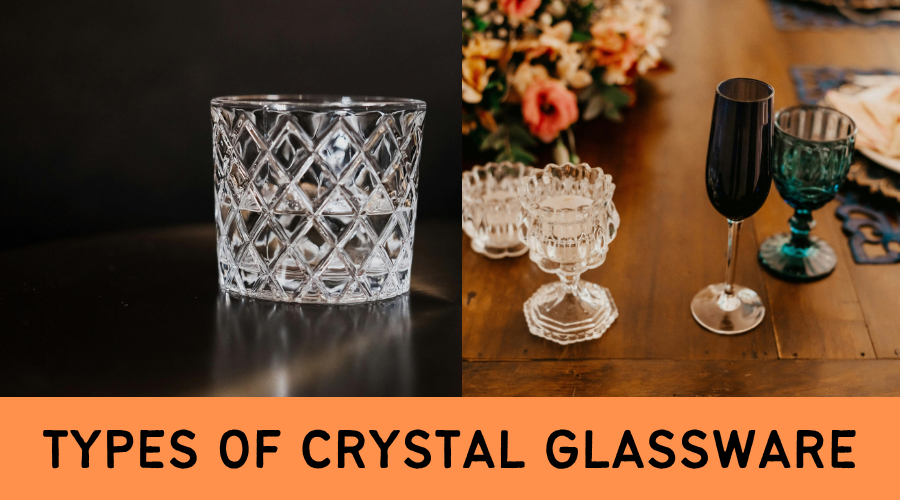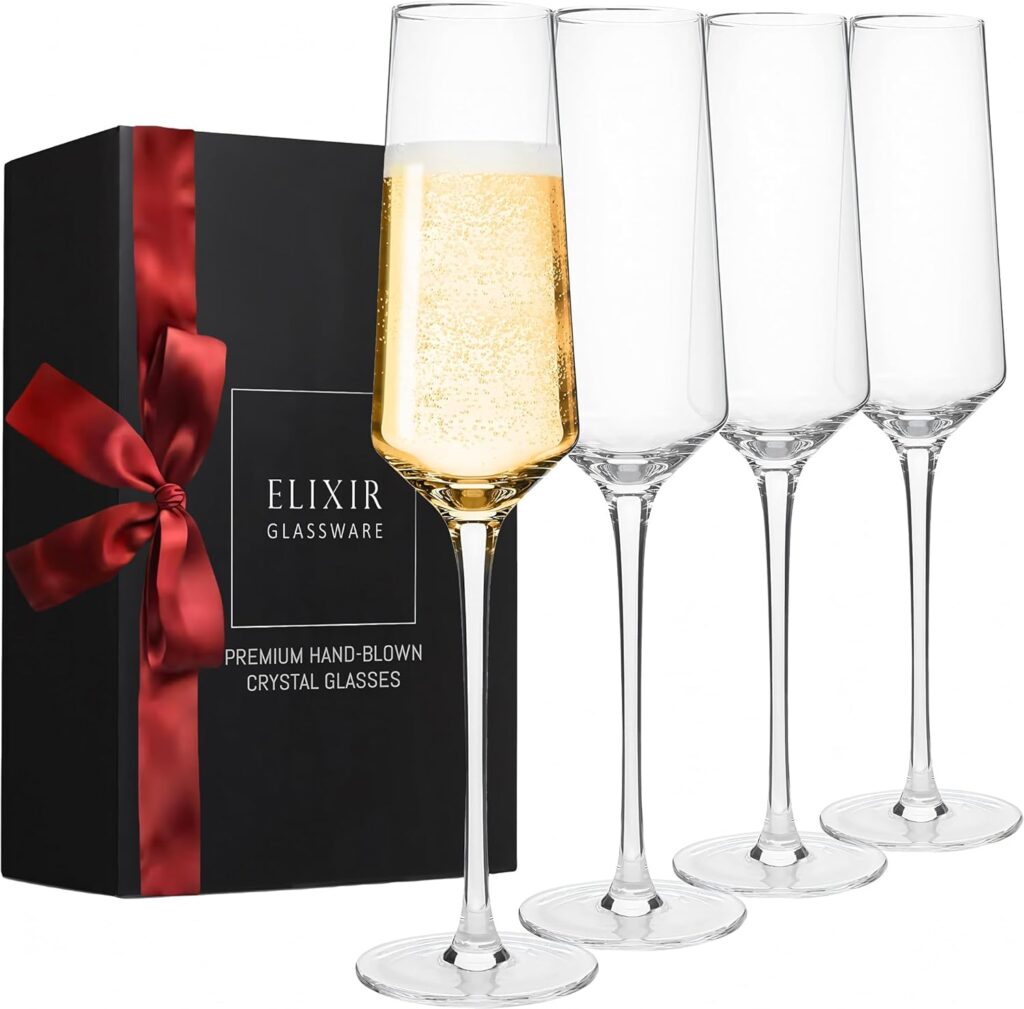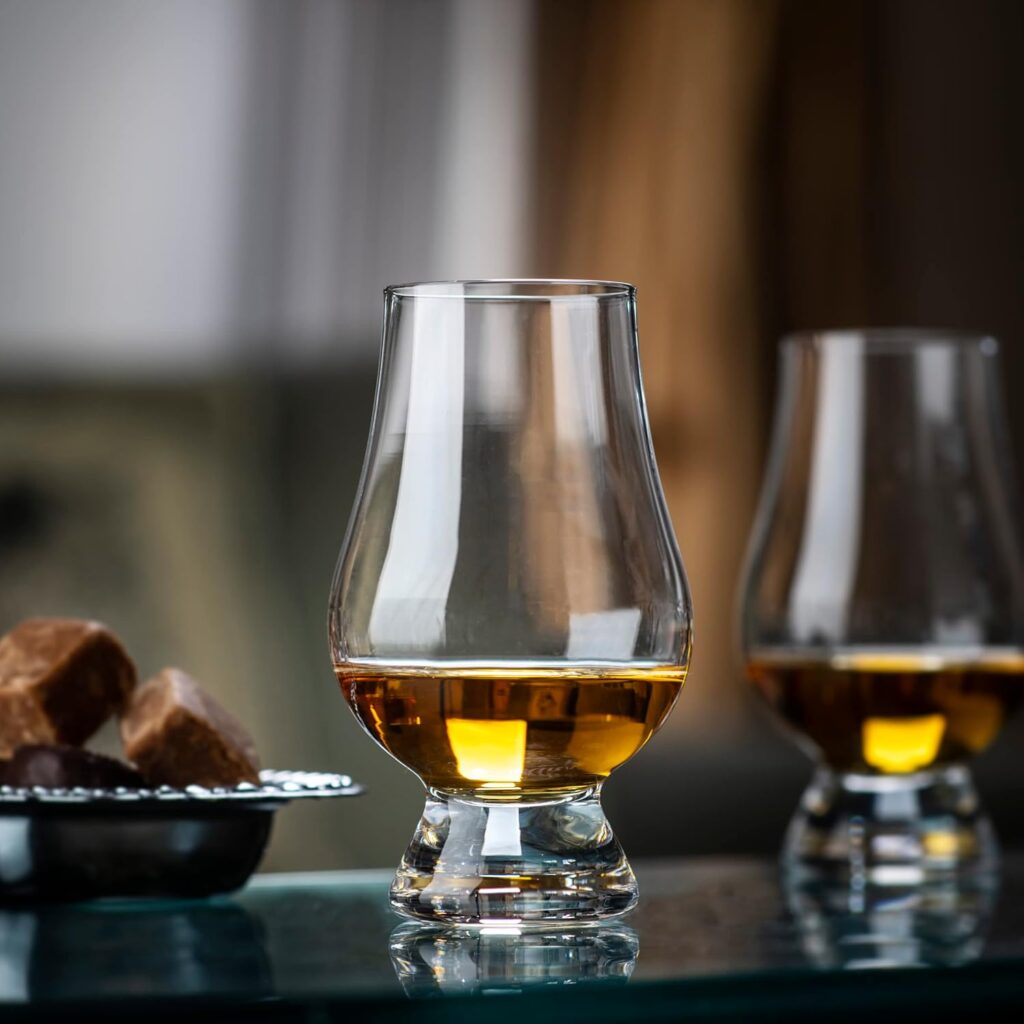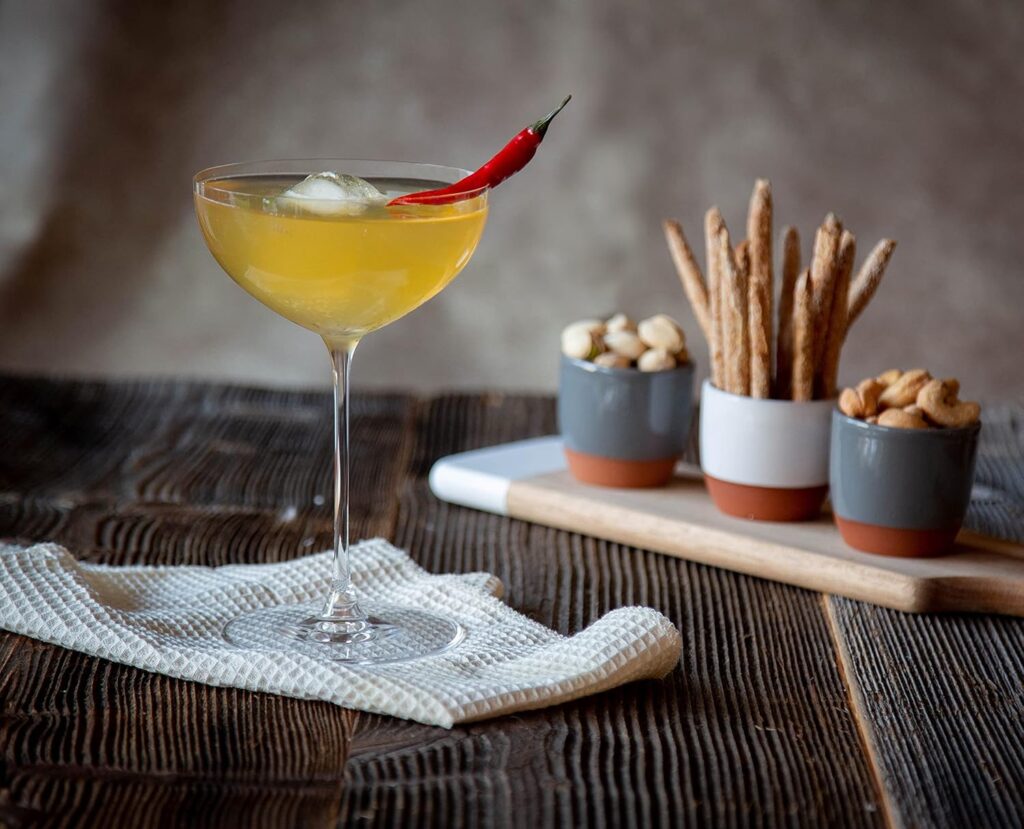You’re hosting your first proper dinner party, and as you reach for those wedding gift wine glasses tucked away in the cupboard, you pause.
Are these crystals? What’s the difference between crystal and regular glass anyway? And why does your grandmother’s sherry set seem to sing when you tap it gently?
If you’ve ever found yourself mesmerised by the way light dances through a beautifully crafted crystal tumbler or wondered why some glassware feels so much more substantial in your hand, you’re not alone.
The world of crystal glassware is far more intricate than most people realise, a realm where centuries-old craftsmanship meets modern innovation.
Understanding the various types of crystal glassware can dramatically transform both your drinking experience and investment decisions.
From the distinctive musical ring of lead crystal to the modern safety standards of unleaded crystal, from the intricate patterns of hand-blown Waterford to the everyday pieces of machine-pressed crystal, each variety serves unique purposes across different price points and occasions.
Whether you’re identifying pieces in your current collection or considering your first serious crystal purchase, mastering these distinctions will forever change how you view your glassware cabinet.
UNDERSTANDING CRYSTAL GLASSWARE: MORE THAN JUST FANCY GLASS
Before we dive into the specific types of crystal glassware, let’s address the elephant in the room: what exactly makes crystal different from ordinary glass?
The answer lies in its composition and the artistry behind its creation.
True crystal glassware contains lead oxide, typically ranging from 10% to 30%, which gives it several distinctive characteristics.

This lead content increases the glass’s density, making it feel notably heavier in your hand.
More importantly, it enhances the material’s optical properties, creating that brilliant sparkle and clarity that makes crystal so captivating.
However, the crystal landscape has undergone significant evolution. Modern manufacturers now produce lead-free crystal alternatives that maintain many of the crystal’s desirable properties without the health concerns associated with lead.

These pieces often contain potassium or barium instead, achieving similar brilliance and durability.
The distinction matters more than you might think. Traditional lead crystal offers superior light refraction, which is why your grandmother’s decanter creates those stunning rainbow patterns when sunlight hits it just right.
Lead-free alternatives, while lacking some of this optical drama, provide peace of mind for daily use and are often more affordable.
THE MAGNIFICENT SEVEN: ESSENTIAL TYPES OF CRYSTAL GLASSWARE

1. Wine Glasses: The Crown Jewels of Crystal Collections
Crystal wine glasses represent perhaps the most diverse category in the crystal world.
Each style serves a specific purpose, designed to enhance particular wine characteristics through careful attention to bowl shape, rim thickness, and overall proportions.

Bordeaux glasses feature tall, broad bowls perfect for full-bodied reds like Cabernet Sauvignon and Merlot. The generous space allows the wine to breathe, while the tapered rim concentrates the aromatic compounds toward your nose.
Premium crystal versions from houses like Riedel or Waterford can cost upwards of $50 per glass, but the difference in your wine’s presentation is remarkable.
Burgundy glasses, with their balloon-like bowls, cater to more delicate reds like Pinot Noir. The wider opening allows these subtle wines to express their complex bouquet fully.

Meanwhile, Champagne flutes maintain their narrow profile to preserve effervescence, though many experts now prefer slightly wider bowls that allow sparkling wines to develop their full aromatic potential.
| Wine Glass Type | Bowl Shape | Best For |
| Bordeaux | Tall, broad | Cabernet, Merlot |
| Burgundy | Wide, balloon-shaped | Pinot Noir, light reds |
| Champagne Flute | Narrow, tall | Sparkling wines |
| White Wine | Medium bowl | Chardonnay, Sauvignon Blanc |
2. Whisky Tumblers: Where Craft Meets Tradition
The crystal whisky tumbler occupies a special place in British drinking culture. These short, wide glasses, often called old-fashioned glasses or rocks glasses, are designed with both aesthetics and function in mind.
Traditional cut crystal tumblers feature intricate patterns that aren’t merely decorative. The cuts create additional surface area, helping to aerate the whisky and release its complex aromatics.

The weight of quality crystal also provides a satisfying heft that enhances the drinking ritual.
Modern crystal manufacturers like Glencairn have revolutionised whisky appreciation with their tulip-shaped tasting glasses.
While not traditional tumblers, these crystal pieces concentrate the whisky’s nose while the narrow opening prevents alcohol burn from overwhelming the palate.

Hand-blown crystal tumblers represent the pinnacle of the craft. Each piece is unique, with slight variations that remind you of the human artisan behind its creation.
These pieces often feature thicker bases for stability and temperature retention, crucial when you’re savoring a 25-year-old single malt.
3. Decanters: Functional Art for Your Sideboard
Crystal decanters serve dual purposes: practical wine or spirits storage and stunning decorative elements. The decanting process itself serves different functions depending on what you’re storing.
For wine, decanting separates the liquid from sediment while allowing oxygen contact to soften tannins and open up flavours.
Wine decanters typically feature wide bases and narrow necks, maximising surface area for optimal aeration.

Crystal versions excel here because the material’s clarity allows you to observe the wine’s colour development as it breathes.
Whisky decanters serve different purposes entirely. Here, you’re showcasing and preserving your spirits while adding elegance to your home bar.
The airtight seal becomes crucial poorly sealed decanters can lead to alcohol evaporation and flavor degradation over time.
Vintage crystal decanters often feature elaborate cut patterns that create stunning light displays.
However, be cautious with antique pieces containing high lead content; they’re magnificent for display but not ideal for long-term spirits storage.
4. Champagne Coupes: Vintage Glamour Reimagined
The crystal champagne coupe represents one of glassware’s most romantic stories. Legend suggests these wide, shallow bowls were modelled after Marie Antoinette’s breast, though this tale is likely apocryphal.
What’s certain is that coupes defined elegant entertaining throughout the early 20th century.
Modern sommeliers often dismiss coupes as impractical because their wide openings allow bubbles to dissipate quickly.

However, crystal coupes have found new life in cocktail culture. Their generous bowls perfectly accommodate champagne cocktails, while their elegant stems add theatrical flair to your drinks service.
Hand-blown crystal coupes offer particular appeal because each piece’s slight variations create unique drinking experiences.
The thin crystal rim enhances the drinking sensation, while the material’s brilliance showcases the drink’s colour beautifully.
5. Brandy Snifters: Engineering Meets Elegance
Crystal brandy snifters represent some of the most thoughtfully designed glassware ever created. Their distinctive balloon shape isn’t mere aesthetics, it’s precision engineering designed to enhance brandy’s complex character.
The wide bowl allows you to swirl the brandy, releasing volatile compounds while the narrow rim concentrates these aromatics.

Quality crystal versions feature thick bases that warm the brandy through hand contact while the material’s thermal properties prevent rapid temperature changes.
Premium crystal snifters often feature subtle cut work around the base, creating visual interest without compromising function.
The finest examples, from houses like Baccarat or Saint-Louis, can cost several hundred pounds but transform brandy appreciation into a multisensory experience.
6. Crystal Vases: Beyond Floral Arrangements
While not technically drinkware, crystal vases deserve mention in any comprehensive crystal discussion.
These pieces showcase crystal’s optical properties better than any other form, creating stunning light displays that transform any room.

Cut crystal vases feature geometric patterns that multiply and refract light, creating rainbow effects throughout your space. The weight and clarity of quality crystal make these pieces conversation starters even when empty.
Modern blown crystal vases often emphasise organic forms, celebrating the material’s ability to capture and enhance natural light.
These pieces work as standalone sculptures, proving that crystal’s beauty extends far beyond the dining room.
7. Specialty Crystal Pieces: The Connoisseur’s Collection
Beyond standard categories lie numerous specialty crystal pieces designed for specific purposes.

Crystal beer glasses are designed for particular styles. Think wheat beer glasses with their distinctive curved shapes enhance beer appreciation similarly to wine glasses.
Crystal cocktail glasses, from martini glasses to Nick & Nora coupes, bring elegance to mixology.
The material’s clarity showcases cocktail colours while its weight adds sophistication to the drinking experience.
LEAD CRYSTAL VS LEAD-FREE: MAKING THE RIGHT CHOICE
The lead crystal versus lead-free crystal debate continues to divide enthusiasts. Traditional lead crystal offers superior optical properties with that brilliant sparkle and rainbow refraction that makes crystal so captivating.
The lead content also makes the glass softer, allowing for more intricate cut work and engraving.
However, health concerns about lead leaching have driven innovation in lead-free alternatives.
Modern lead-free crystal uses potassium, barium, or other compounds to achieve similar properties.
While these alternatives may lack some of lead crystal’s optical drama, they’re completely safe for daily use and often more durable.
Professional sommeliers increasingly favour lead-free options for restaurants and tasting rooms, while collectors often prefer traditional lead crystal for special occasions and display pieces.
CRYSTAL CARE: PRESERVING YOUR INVESTMENT
Proper crystal glassware care ensures your pieces maintain their brilliance for generations. Hand washing remains the gold standard; dishwashers’ high temperatures and harsh detergents can cloud crystal permanently.
Use lukewarm water and mild washing-up liquid, avoiding abrasive sponges that might scratch the surface. For cut crystal pieces, use a soft brush to clean intricate patterns where dirt can accumulate.
Storage matters equally. Wrap pieces individually in soft cloth, avoiding newspaper, which can leave ink stains. Display pieces away from direct sunlight to prevent cloudiness over time.
CHOOSING YOUR CRYSTAL: A BUYER’S GUIDE
When selecting crystal glassware for your home, consider both function and aesthetic appeal.
Start with basic wine glasses appropriate for your drinking preferences, whisky tumblers if you enjoy spirits, and perhaps a decanter for special occasions.
Budget considerations vary enormously. Quality crystal from established manufacturers starts around $30-50 per piece for basic designs, while hand-blown or heavily cut pieces can cost several hundred dollars each.
Vintage pieces offer excellent value, though ensure they’re lead-free if you plan regular use.
Consider your lifestyle too. Daily entertainers might prefer durable, lead-free crystal, while collectors might gravitate toward traditional lead crystal for its superior optical properties.
THE FUTURE OF CRYSTAL GLASSWARE
The crystal industry continues evolving, embracing both tradition and innovation. Modern manufacturers experiment with new compositions, achieving crystal-like properties without lead, while traditional houses maintain centuries-old techniques.
Sustainability concerns drive innovation, too. Some manufacturers now offer crystal made from recycled glass, maintaining quality while reducing environmental impact.
REGIONAL STYLES AND RENOWNED MANUFACTURERS
European crystal traditions vary significantly by region. Bohemian crystal from the Czech Republic emphasises elaborate cut work and vibrant colours, while Irish crystal like Waterford focuses on precision cutting and clarity.
French crystal houses like Baccarat and Saint-Louis represent luxury’s pinnacle, creating pieces that function as investment art. Their crystal often features subtle colours and exceptional optical clarity.
German manufacturers like Schott balance traditional craftsmanship with modern innovation, producing both traditional lead crystal and cutting-edge lead-free alternatives.
COLLECTING AND INVESTMENT POTENTIAL
Crystal collecting has gained popularity as both a hobby and an investment. Vintage pieces from renowned manufacturers often appreciate significantly, particularly limited editions or discontinued patterns.
However, collect for enjoyment first. The most valuable crystal collections reflect personal taste and actual use rather than pure investment strategy. After all, crystal’s true value lies in the pleasure it brings to your daily life.
CONCLUSION: ELEVATING EVERY OCCASION
Now that you know about the different types of crystal glassware, you can make better choices for your home and special occasions.
Whether you pick lead crystal for its beautiful sound and sparkle, or go with lead-free crystal for everyday safety, each type has its benefits.
Remember, you don’t need to spend a fortune to enjoy good crystal. Start with a few basic pieces that you’ll use, maybe some wine glasses or water tumblers.
Look for sales at department stores, check out estate sales, or even browse online marketplaces for genuine pieces at better prices.
The most important thing is to choose a crystal that fits your lifestyle and budget. If you have young children, lead-free might be your best bet.
If you love hosting dinner parties, investing in a few lead crystal pieces can make your table look amazing.
Take another look at those glasses in your cupboard – you might be surprised by what you already own. And next time you’re shopping for glassware, you’ll know exactly what to look for and why it matters.
What’s your favorite type of crystal glassware? Share your experiences and recommendations in the comments below.